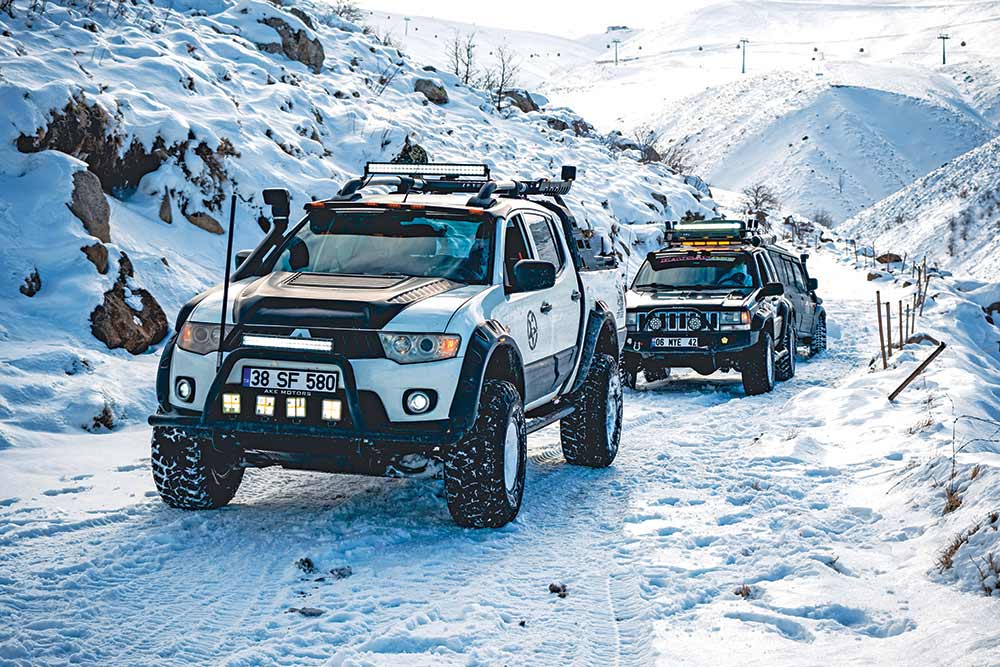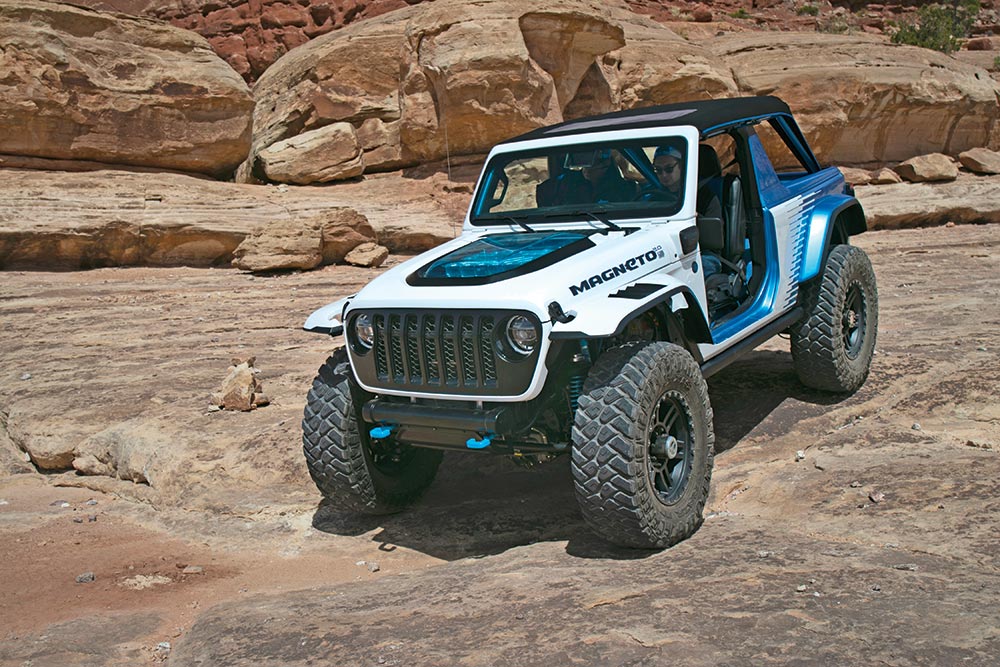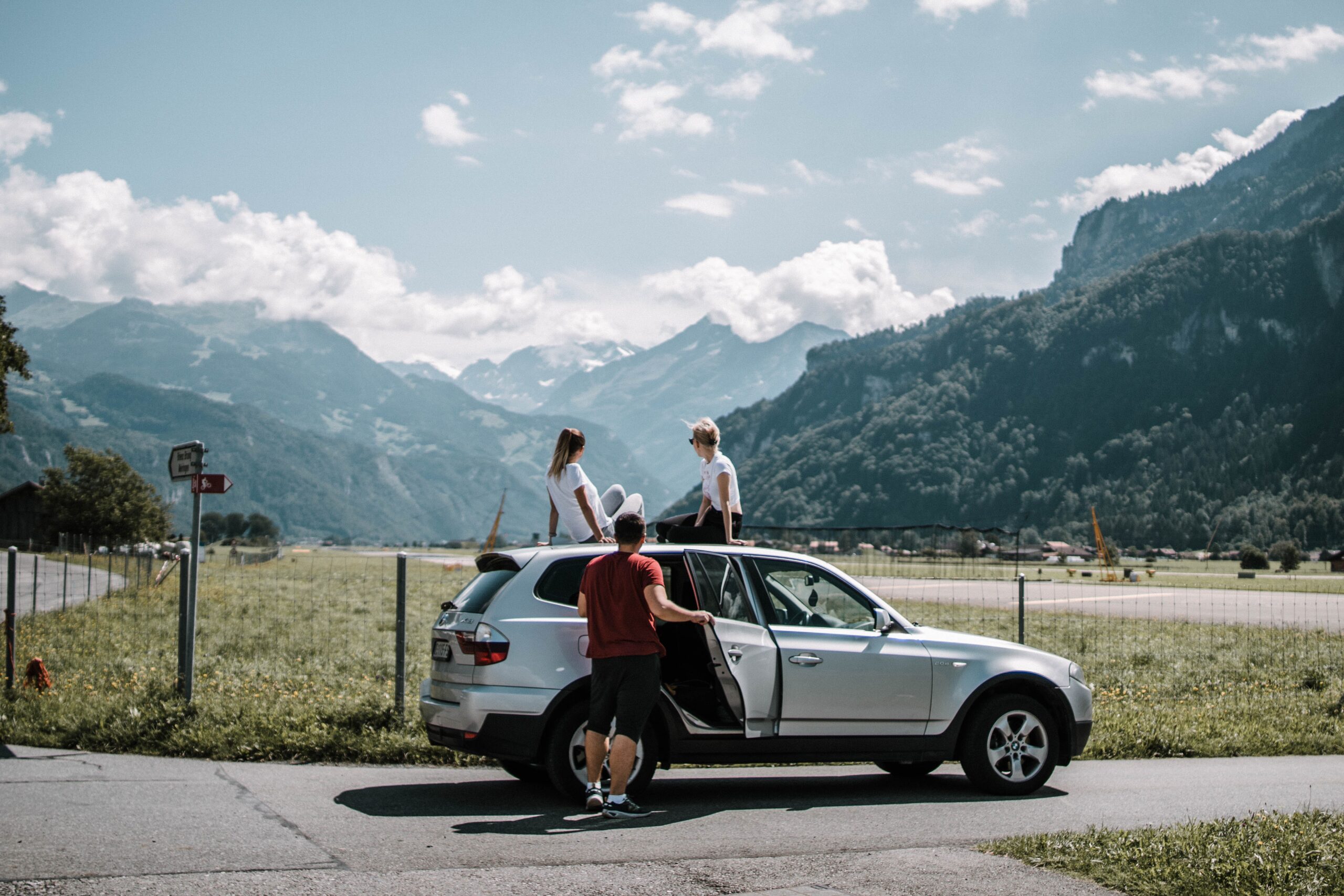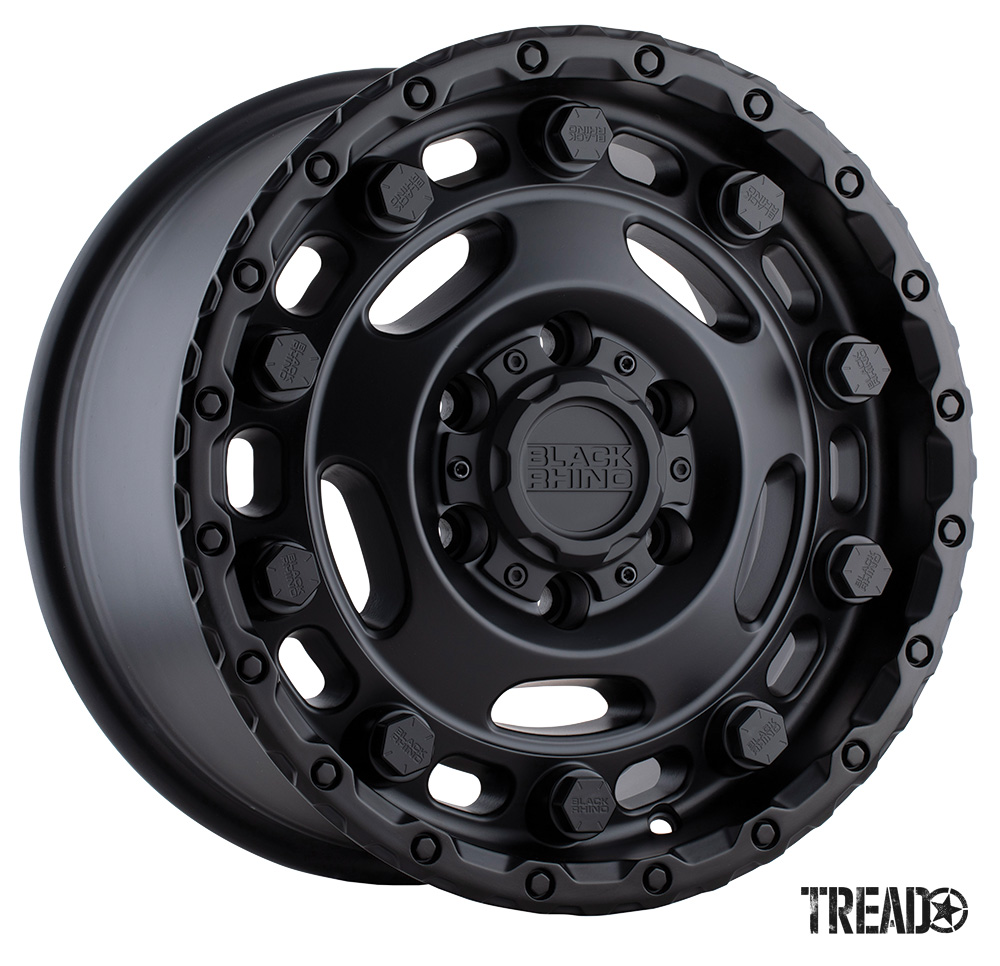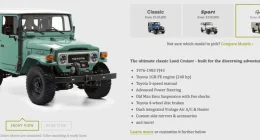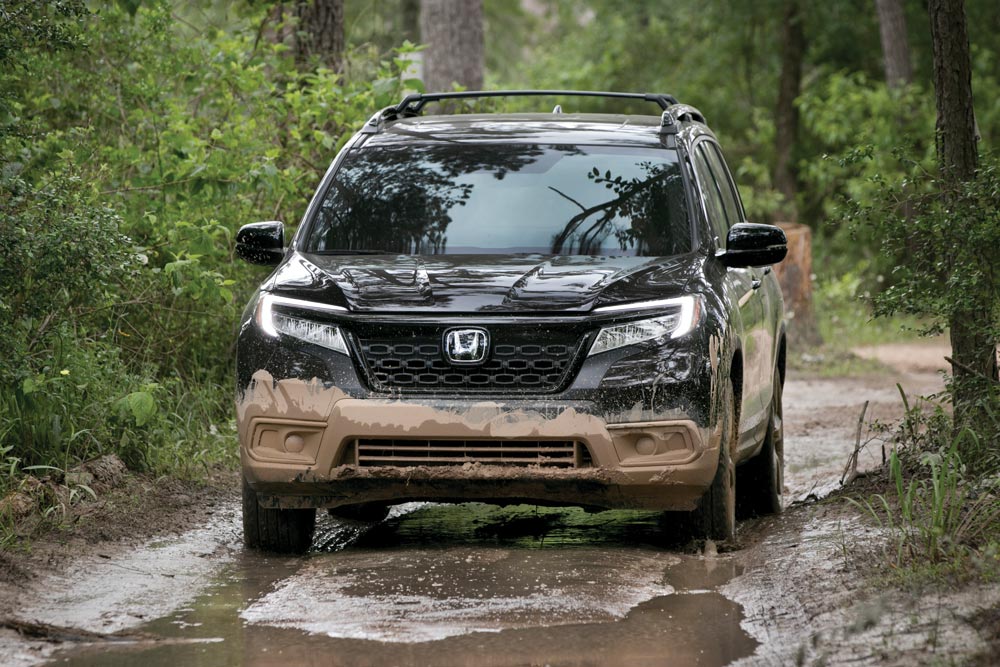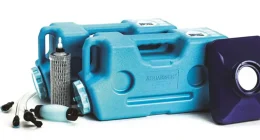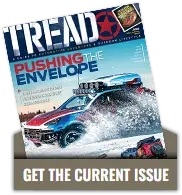SNOWBOUND! Tips for Snowbound Emergencies
Ten ways to keep your rig from becoming a frozen tomb
A relaxing drive up to the mountains to play in the snow seemed like a perfect way to spend a Saturday afternoon. No hard trails this time. No deep-woods trekking. Just a nice easy drive up the canyon road. While building snowmen and pelting your girlfriend with snowballs, ominous black clouds rolled in. The temperatures plummeted, and dime-sized flakes began to fall. In a blink of an eye, your Jeep is covered. Before you are able to dig it out, it’s too late. You’re stranded, cold, and isolated. Your recovery gear is useless and any hope of rocking it out of the snowdrifts is hopeless. Suddenly, you’re in danger of becoming snowbound.
You have a choice: walk out or stay put. What you do depends solely on the weather. If it is a brief storm that won’t be followed by another one, perhaps walking out is your best bet. However, frostbite and hypothermia can set in quickly if you’re not prepared for it, and you’d better make sure you know exactly where you are going. In situations like this, many times those that choose to leave the relatively safety of the vehicle get lost in the snow and die within sight of it.
If you are unsure of how long the storm will last or the severity of it, don’t leave the general area of your car. Your car is your lifeline. Like an igloo, staying within the confines of a snowed-in vehicle will provide you much more of a chance at survival than out in the wilderness on your own
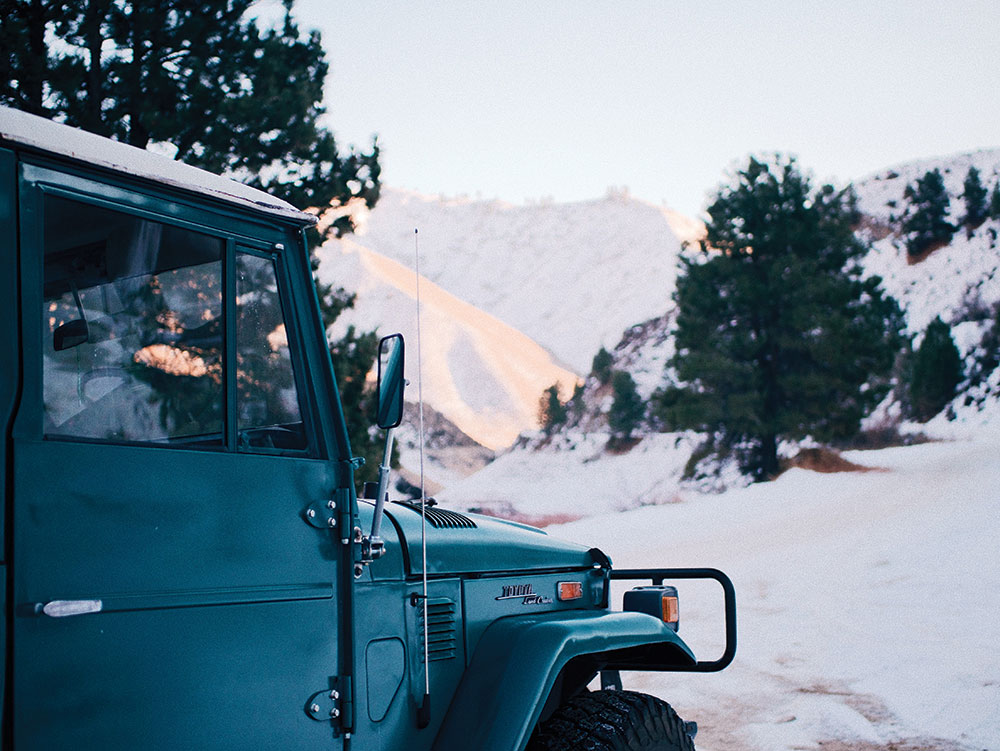
Be Prepared For Snow
Before you even leave the house for any type of driving in the snow, make sure you are well prepared for any sort of winter emergency. Although you may have planned for only a few hours’ jaunt into the wintery playground, pack your trunk with a few snow necessities. These include a shovel, ice scraper, your Get-Home bag, some snacks, and a few bottles of water.
Have those survival items you should always carry in your car: a few road flares, ways of making fire, and a knife or hatchet. Extra blankets or a sleeping bag to help stave off the cold should be included, as well as warm hats and gloves. Keeping a good-sized first-aid kit is good for common injuries, and a metal container will help melt snow and hold extra water.
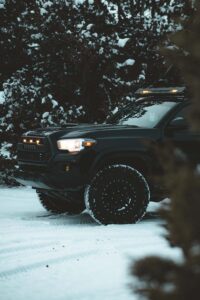
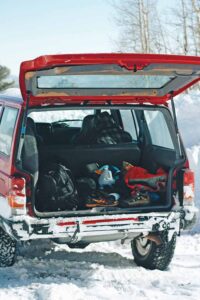
Stay Calm And Assess the Situation
Panicking never solved any crisis, and you’ll just use up energy doing so. Stay calm and always plan for a way out. Are you alone? Are there other cars around? Is there help nearby? Turn on the radio or use your phone’s apps to try to figure out how long the storm will last.
Take stock of your surroundings and the gear or equipment you have inside the Jeep. Are there blankets, towels, extra clothing, or warmer shoes you could use? Be creative with what you have available: the floor mats can be used as insulation against the windows, while you can cut strips of the seats to wrap your feet in.
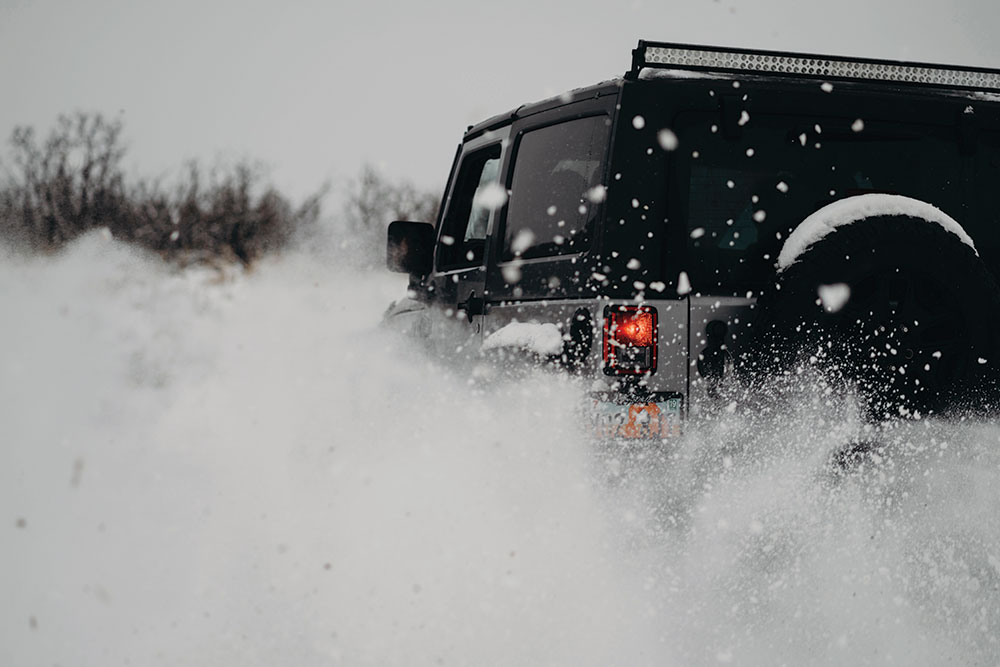
Get Noticed
During winter months, it is a good idea to carry an emergency kit that contains flares and reflective triangles in your trunk because you’ll want your car to be noticed. Lift up your wipers and attach red strips of cloth to them (to the antennae too). If your battery is strong enough, keep your emergency flashers on and honk the horn (three long bursts at a time) to get attention.
If you have the means, start a fire and keep feeding it green foliage so that it will smoke. Oil-soaked rags will produce a black pall that should be seen over a great distance. If there isn’t a clearing in the snow, contain the fire in an upended hubcap or license plate on top of the snow.
Clear Your Pipes When Snowbound
Consider yourself fortunate if you have plenty of gas. If so, you can run your car from time to time to utilize the heater. At idle, a car uses about 0.16 of a gallon of gas per hour. Therefore, a full 15-gallon tank will last about three days. But be sure to use it sparingly, 15 minutes max per hour, because you might be stuck longer than three days.
It is important, however, to keep your tailpipe and grille clear. Air needs to get to the engine to run, and exhaust gases need to have a place to go. If not, carbon monoxide can seep into the car’s cabin. During winter months, keep a length of metal flex hoses wide enough to fit over your muffler and long enough to reach above the snowfall. To play it safe, it is a good idea to keep a window cracked when running the engine to prevent carbon dioxide from building up inside the car. Open the window that is farthest from you and downwind from the storm.

Get Your Shovel
Start to dig yourself out if it is safe to do so. No sense in just sitting there, waiting for the snow to melt. Watch for overexertion, as your body may already by taxed trying to stay warm. Try not to sweat.
When You’re Snowbound: Stay Together
If you don’t have the need to get out of the car, then don’t. A blizzard can be deadly, even after being exposed to it for only a few minutes. Trekking off by yourself has ended poorly for many people, so it is best to stay together as long as possible. Plus, the more people in the car, the more body heat will help keep everyone warm. If you have to leave, leave together.
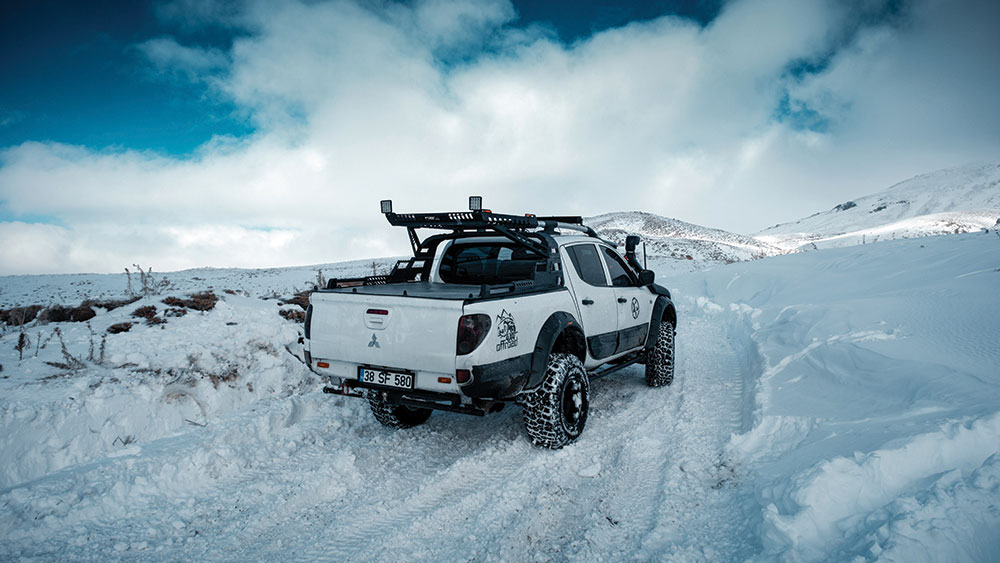
Keep Warm
Do your best to stay warm in a snowbound situation. Wrap tissue around your fingers and toes if you don’t have gloves or thick socks. Keep your head covered. Huddle together and share body heat. Try to stay in the center of the car, away from the sides. Run the heat long enough to warm up the car and then turn off the engine.
Staying dry is one of the most important steps to staying warm. Wet clothes will wick away heat from your body quickly, so if you must go outside, make sure to avoid sweating. Keep as much snow out of the car as possible when you return.
Stay Hydrated and Fed
Staying well-fed may be difficult to do if you have limited resources, but there is plenty of water around you. You can quickly melt snow in your engine compartment for water (inside the metal container you brought). It is best to eat as much as you can so your body can continue to create heat. The more hydrated and fed you are, the warmer you will be.
If you can avoid it, don’t try to hunt or fish. You will likely not find anything in the winter as animals are not as active. Plus, the energy expended in the freezing cold will likely not be replaced by what you can catch.
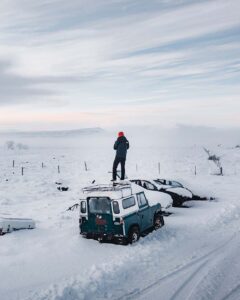
Keep Moving
When cold, muscles stiffen, and a lack of movement only makes them colder. When awake, stay moving. Bicycle your legs, clap your hands together, stretch your torso. This will increase blood flow while creating heat.
It is a good idea to keep a window cracked to prevent carbon dioxide from building up inside the car and allow fresh air to enter. Open the window that is farthest from you and downwind from the storm.
Check for Cold-Related Injuries
Frostbite and hypothermia are silent killers, and they can permanently damage your body before you even realize it. It is important to keep the circulation flowing in your extremities such as your hands, feet, lips, nose, and ears. Limit your skin’s contact to the snow, and keep wind exposure to a minimum.
Every chance you get, check your fingers and toes for signs of frostbite. They will begin to turn ashen white at first, then blue, then black. Early in the process, they will grow numb, so you may not even notice anything is wrong without a visual inspection.
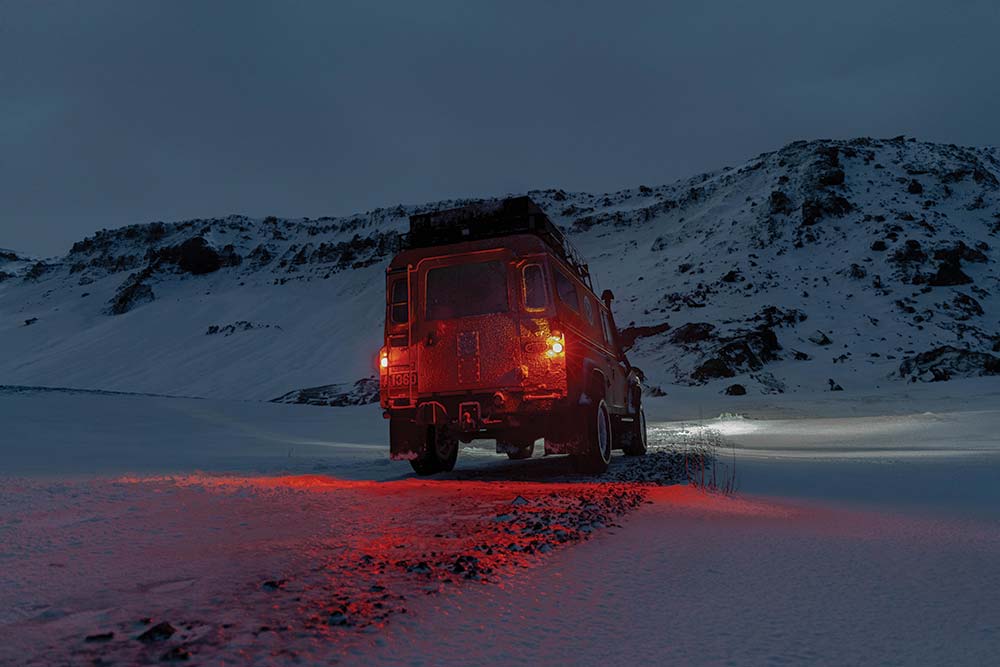
Is It Safe To Eat Snow?
The short answer is “no,” but the long answer is, “depends.”
Consuming snow is like eating a big bowl of ice cream. It will make you cold on the inside until your body has time to convert it to body temperature. When you are already cold to begin with, your body has to work harder to warm up the water than the energy you will get from it. That’s the no.
The depends answer comes into play if you’re dehydrated. Consuming manageable amounts of snow (if you have no way of melting it) is a good thing if your body truly needs the liquid.
The best option in any scenario is to use body heat from activity to melt snow or put a container of snow under the hood and let the engine melt it. Either way, you should always be planning ahead for if/when you run out of water. If you have a sealable container, put it in between your layers of clothing near your core and keep stirring it with something often to melt it down quicker. The snow-to-water ratio is about a 10 to 1, so it takes a lot of snow to get a little water. Still, it’s better than nothing.
Ways Of Freeing A Stuck Car
If it is safe to do so, trying to get your vehicle unstuck will accomplish a few things. One, you’ll have something to do (which will keep you mind busy); two, you’ll be active which will keep you warm; and three, your car may get unstuck as a result of your efforts.
Start by clearing the snow away that is trapping your car to begin with. Use a shovel, hubcap, taillight lens, or anything that can move the snow without having to touch it.
Remove any packed snow and/or ice that might be between the tires and the road. It only takes a little bit of snow to cause a car to lose traction.
Use four-wheel drive, and apply gas lightly to get the car rolling.
If you have problems going forward, try Reverse and rock the car back and forth until enough momentum is achieved.
Don’t apply too much gas and don’t spin the tires. The tires may start digging themselves deeper or snow may get in the treads of the tires.
Once free, drive slowly without stopping until you are in a safe location.
Editor’s note: This story originally appears in the Nov/Dec 2022 issue of Tread Magazine.

